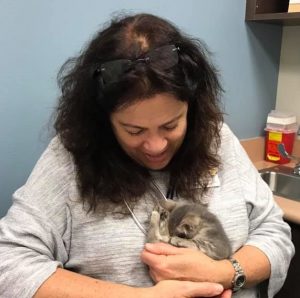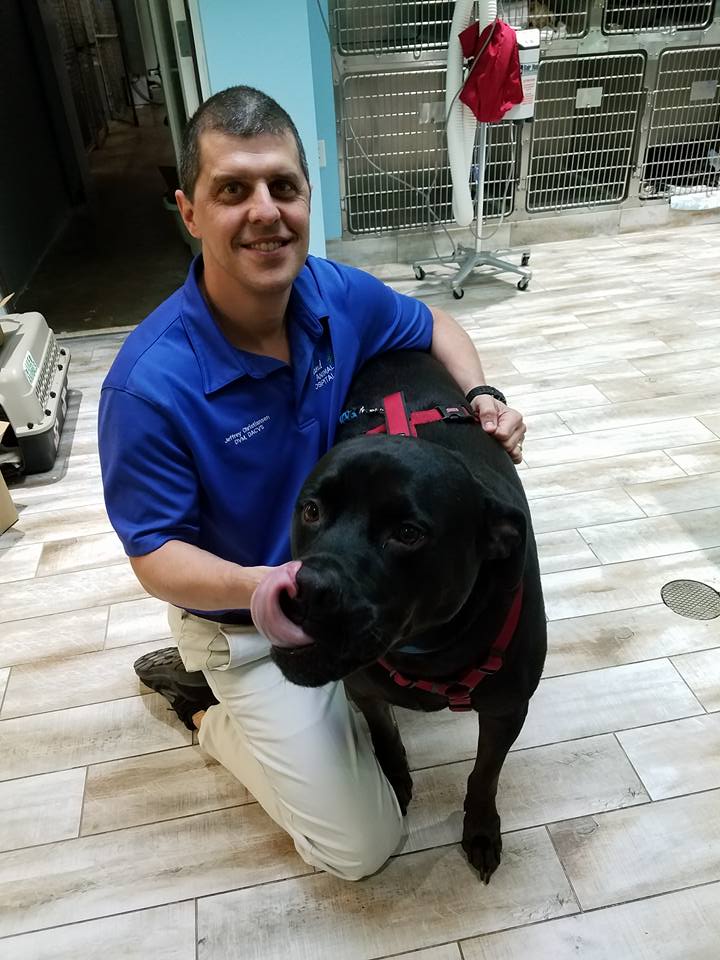We recently exhibited at the Western Veterinary Conference in Las Vegas, Nevada. This veterinary trade show is well attended due to its size, location, and plethora of educational opportunities. I spent several days in the booth along with the team, meeting and speaking with veterinary professionals from across the globe. These trade shows are always a good opportunity to connect with our current clients and educate future clients about Regenerative Veterinary Medicine. Every year, we get a lot of good questions, some of which we think animal owners would like to know about as well. Below we have answered some of the questions we received while at the conference.
- Why do you use fat-derived stem cells rather than bone marrow?
Fat tissue has been shown to have 100 to 500 times the amount of stem cells as bone marrow per amount of tissue collected. On top of that, fat is generally plentiful and easily collected. Because of this, culturing, or growing, more doses is usually not necessary and therefore cells can be returned for treatment within 48 hours after collection – a critical time for healing of acute injuries before scar tissue has formed – rather than several weeks.
- If stem cells are processed with an in-clinic system, is that more sterile than if the fat is sent to the VetStem laboratory for processing?
Simple answer: No. VetStem uses sterile Bio-Safety cabinets which are inside of hepa-filtered clean rooms. As clean as your veterinary office may appear, you can’t get any cleaner than a “clean room” that is designed specifically to process stem cells. We take sterility very seriously at VetStem, to the point that we may recommend delaying treatment if we feel a sample’s sterility has been compromised.
- Which is better, Platelet Rich Plasma or Stem Cell Therapy?
When speaking in terms of healing, we believe the “gold standard” is a combination of both stem cell and platelet therapy. When the two are used together, they have a synergistic effect, meaning they work together to speed healing and reduce pain and inflammation. Stem cells have a number of jobs including the down-regulation of inflammation and pain as well as tissue regeneration. Stem cells also have the ability to home to areas of injury/inflammation. While platelets contain many types of growth factors that help attract additional healing cells, they cannot respond to cellular signals, specific tissue needs, or the severity of the injury. That being said, platelet therapy has its advantages. For one, platelets are concentrated in a closed system (unlike the stem cell kits that aren’t a closed system) right in your veterinarian’s office so there is very little wait time between collection and treatment. Also, platelet therapy is sometimes used when stem cell therapy is not financially possible.
- Does adipose-derived stem cell therapy work? How long do the effects last?
VetStem has been providing stem cell treatments for animals since 2004. With over 17,000 treatments, including for multiple animals from the same veterinarians over the years, many have found benefit in using stem cell therapy. But we’re going to be honest and say that it doesn’t work for ALL conditions and it doesn’t have the same effects for all patients. Some patients do better than others and the results depend on a variety of factors including severity of the disease being treated, lifestyle of the animal, and the management of the patient after stem cell injection. Just like with people, physical therapy is usually part of an orthopedic treatment plan. These same factors can contribute to the longevity of the effects of stem cell therapy. We see dogs who receive one treatment and experience good results that don’t require another treatment for many years, if at all. We also see dogs with severe joint disease that benefit from repeat treatments every six month to a year. So again, it’s very case dependent. Your veterinarian can help you to determine if your pet may benefit from stem cell therapy.
- Why should I choose VetStem instead of other stem cell companies?
There are many reasons why thousands of veterinarians and their pet owners have chosen to use VetStem services over other regenerative medicine companies. We highlighted some of the important reasons in a previous blog that you can find here.
We hope these questions/answers have provided some insight into why VetStem is a leader in the field of Regenerative Veterinary Medicine. We enjoy educating our peers, be they veterinarians, technicians or pet owners! If you have further questions about Regenerative Veterinary Medicine or VetStem, feel free to contact us or speak to your veterinarian. Or, to receive a list of VetStem providers in your area, submit a Locate a Vet request here.




